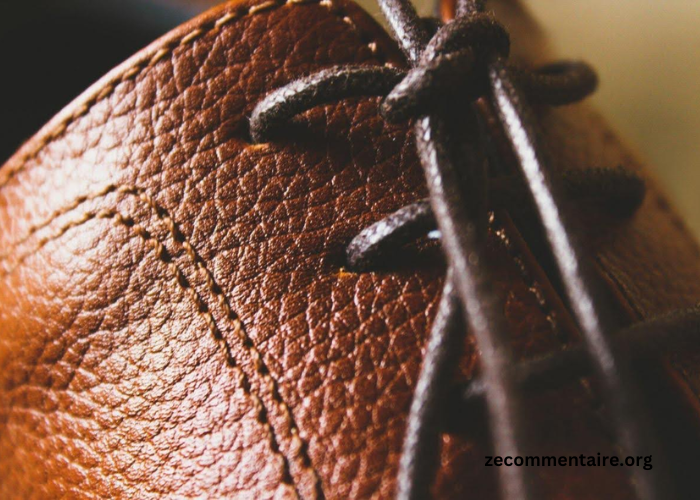Leather is a timeless material, cherished for its durability, elegance, and versatility. No matter what style you have, you probably have something leather in your closet.
So whether you own a vintage leather jacket, a high-end handbag, or a pair of classic leather shoes, knowing how to properly care for your leather products is essential. In this guide, we’ll take you through the essentials of leather protection. We’ll ensure that your cherished belongings last a lifetime.
Let’s dive in!
Understanding Leather
Before we dive into the specifics of leather care, it’s crucial to understand the material itself. Leather is made from animal hide, and its quality can vary significantly based on the type of hide used and the tanning process. The most common types of leather are full-grain, top-grain, genuine, and bonded leather.
Each type has its unique characteristics and requires specific care methods. Full-grain leather, for example, is the highest quality and retains the hide’s natural texture. Bonded leather is made from leftover scraps and is often less durable.
The Essentials of Leather Care
Effective leather care starts with understanding the basics. The three primary steps to maintaining your leather goods are cleaning, conditioning, and protecting.
Cleaning Your Leather Goods
Regular cleaning is the first step in leather maintenance. Dust, dirt, and oils from your skin can accumulate on the surface of leather products, leading to deterioration over time.
To clean your leather items, start by wiping them down with a soft, dry cloth to remove any loose dirt. For a deeper clean, use a damp cloth with a small amount of mild soap or a specialized leather cleaner.
It’s important to avoid using harsh chemicals or excessive water. These can damage the leather. Gently wipe the surface in a circular motion, and then allow the leather to air dry naturally.
Conditioning for Longevity
Leather, like your skin, needs moisture to stay supple and prevent cracking. Conditioning your leather goods regularly helps maintain their flexibility and luster. Use a high-quality leather products care like leather conditioner or cream, applying it evenly with a soft cloth.
Allow the conditioner to penetrate the leather for at least 15 minutes before buffing it out with a clean cloth. This process not only moisturizes the leather but also restores its natural oils, enhancing its appearance and extending its lifespan.
Protecting Your Leather
Protecting leather goods from the elements is crucial for their longevity. Exposure to sunlight, heat, and moisture can cause significant damage, leading to fading, drying, and cracking.
To shield your leather items, consider using a leather protectant spray that repels water and prevents stains. Apply the protectant evenly and allow it to dry completely before using the item.
Special Care for Different Leather Products
Different leather products require tailored care approaches to ensure they remain in top condition. Here’s how to care for some common leather items:
Leather Jackets
Leather jackets are a wardrobe staple, and proper care can keep them looking stylish for years. Avoid exposing your jacket to rain or excessive heat, and always hang it on a padded hanger to maintain its shape.
Clean and condition your jacket regularly. Use a leather protectant spray to guard against the elements. If your jacket gets wet, blot the excess moisture with a towel and allow it to air dry naturally.
Leather Handbags
Leather handbags are both functional and fashionable, but they can be prone to wear and tear. To protect your bag, avoid overloading it. This can stretch the leather and damage the handles.
Clean the exterior regularly with a damp cloth. Then condition it monthly to keep the leather soft.
Store your handbag in a dust ag when not in use. Then stuff it with tissue paper to maintain its shape.
Leather Shoes
Leather shoes can endure significant wear, so proper maintenance is key. Clean your shoes after each wear with a soft brush or cloth to remove dirt and debris. Condition them periodically to prevent cracking and to keep the leather supple.
Use shoe trees to help maintain their shape, and store them in a cool, dry place. For added protection, apply a water-resistant spray before wearing them in wet conditions.
Leather Furniture
Leather furniture adds a touch of luxury to any home, but it requires regular upkeep. Dust your furniture weekly with a dry cloth, and clean it with a damp cloth and mild soap every few months.
Condition the leather twice a year to keep it soft and prevent drying. Avoid placing your furniture in direct sunlight or near heat sources, as this can cause fading and cracking.
Common Leather Problems and Solutions
Even with diligent care, leather preservation is hard as leather products can encounter issues over time. Here are some common problems and how to address them:
Stains
For fresh stains, blot the area gently with a clean cloth to absorb as much of the spill as possible. For tougher stains, such as ink or oil, use a specialized leather cleaner or seek professional help. If possible, test the cleaner on a small, inconspicuous area first.
Scratches
Minor scratches can often be buffed out with a soft cloth and a small amount of leather conditioner. For deeper scratches, consider using a leather repair kit or consulting a professional. You should also avoid using sharp objects near your leather products.
Dryness
If your leather starts to feel dry, condition it immediately to prevent cracking. For severely dry leather, consult a professional for proper care recommendations.
Mold and Mildew
Leather items stored in damp or humid conditions can develop mold and mildew. To address this issue, wipe the affected area with a cloth dampened with a mixture of equal parts water and rubbing alcohol.
Allow the leather to air dry completely, and then apply a leather conditioner to restore moisture. To prevent mold and mildew, store your leather items in a cool, dry place and use moisture-absorbing products like silica gel packets.
Leather Protection Is Serious Business
Leather products are an investment that requires proper care to maintain their beauty and functionality. With a little knowledge and the right tools, you can ensure the best leather protection to make your leather goods last for years.
Remember to clean, condition, and protect your leather items regularly, and address any issues promptly. This way, you can enjoy your timeless leather pieces with pride.
Was this article helpful? Then check out the rest of our site for more.





